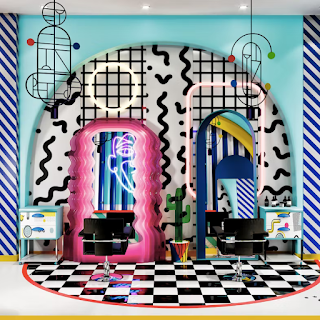Post Modernism

With oil embargos causing a global recession, luxurious items and lifestyle began to decline. In the 1980s when global economics began to rise again people started to become greedy this came about in art, design, architecture, and fashion. The post modern style revolted against the modernist style and began to become more focused on the environment when it came to design, recycling and DIY began to grow in popularity. The Memphis Movement began to take over with a more eclectic style where the boundaries of scale and order in design were greatly tested. This style was inspired by Art Deco and Art Pop to create this unique quirky style that was a very distinct revolt against modernist design. One Step Further: Michael Graves was apart of the New York Five and truly stood out to me because of his designs and thought process behind the designs. Graves was an architect that embraced decorative detailing using strong colors and forms throughout. He often used colors reminiscent o...





